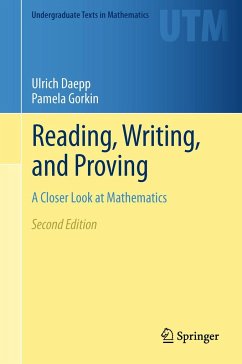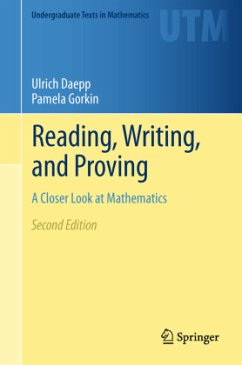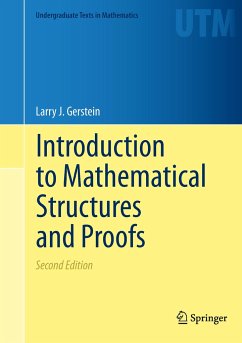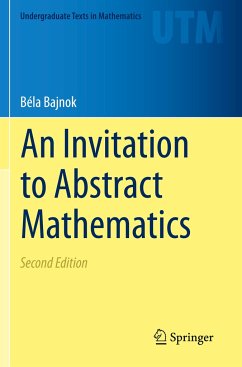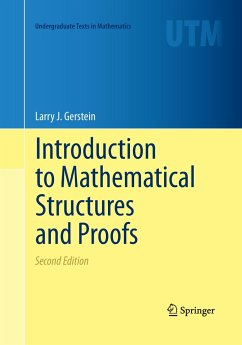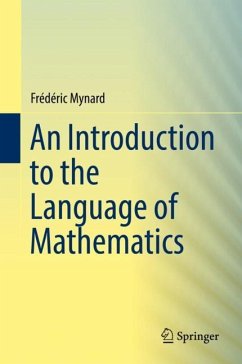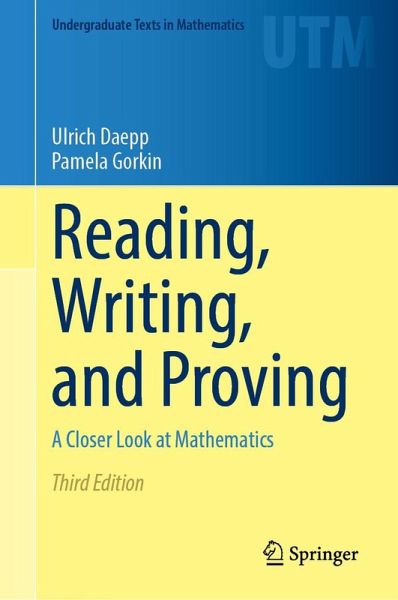
Reading, Writing, and Proving
A Closer Look at Mathematics
Versandkostenfrei!
Erscheint vorauss. 5. Januar 2026
51,99 €
inkl. MwSt.
Weitere Ausgaben:

PAYBACK Punkte
26 °P sammeln!
This book, which assumes only a precalculus background, aids students in their transition to higher-level mathematics. The authors begin by providing a great deal of guidance on how to approach definitions, examples, and theorems in mathematics and end with suggested projects for independent study. The reader will follow Pólya's four step approach to problem solving: analyzing the problem, devising a plan to solve the problem, carrying out that plan, and then determining the implication of the result. Special emphasis is placed on reading proofs carefully and writing them well. The authors ha...
This book, which assumes only a precalculus background, aids students in their transition to higher-level mathematics. The authors begin by providing a great deal of guidance on how to approach definitions, examples, and theorems in mathematics and end with suggested projects for independent study. The reader will follow Pólya's four step approach to problem solving: analyzing the problem, devising a plan to solve the problem, carrying out that plan, and then determining the implication of the result. Special emphasis is placed on reading proofs carefully and writing them well. The authors have included a wide variety of exercises with solutions, examples, illustrations, and problems, making the book ideal for independent study.
The third edition provides the reader with significant changes, all of which have been artfully designed to enhance the learning and teaching experience. The topic of mathematical induction has been modified and moved to an earlier part of the text. Two technical chapters and many proofs have been revised, and a chapter on visualizing complex functions has been added. There are many new problems, an additional spotlight on professional ethics, new projects and some revisions of others. Short videos about each chapter and some solutions are freely available as electronic supplementary material. An instructor solutions manual for all odd-numbered problems is available on Springer Nature s extra materials archive.
While standard texts in this area prepare students for future courses in algebra, this book also includes chapters on sequences, convergence, and metric spaces for those wanting to bridge the gap between courses in calculus and those in analysis.
From a review of the Second Edition:
It is the impression of the author of this review that the book can be particularly strongly recommended for teacher students to enable them to catch and transfer the "essence" of mathematical thinking to their pupils. But also everybody else interested in mathematics will enjoy this very well written book. Burkhard Alpers Zentralblatt
From a review of the First Edition:
The book emphasizes Pólya s four-part framework for problem solving [it] contains more than enough material for a one-semester course, and is designed to give the instructor wide leeway in choosing topics to emphasize This book has a rich selection of problems for the student to ponder I was charmed by this book and found it quite enticing. Marcia G. Fung MAA Reviews
The third edition provides the reader with significant changes, all of which have been artfully designed to enhance the learning and teaching experience. The topic of mathematical induction has been modified and moved to an earlier part of the text. Two technical chapters and many proofs have been revised, and a chapter on visualizing complex functions has been added. There are many new problems, an additional spotlight on professional ethics, new projects and some revisions of others. Short videos about each chapter and some solutions are freely available as electronic supplementary material. An instructor solutions manual for all odd-numbered problems is available on Springer Nature s extra materials archive.
While standard texts in this area prepare students for future courses in algebra, this book also includes chapters on sequences, convergence, and metric spaces for those wanting to bridge the gap between courses in calculus and those in analysis.
From a review of the Second Edition:
It is the impression of the author of this review that the book can be particularly strongly recommended for teacher students to enable them to catch and transfer the "essence" of mathematical thinking to their pupils. But also everybody else interested in mathematics will enjoy this very well written book. Burkhard Alpers Zentralblatt
From a review of the First Edition:
The book emphasizes Pólya s four-part framework for problem solving [it] contains more than enough material for a one-semester course, and is designed to give the instructor wide leeway in choosing topics to emphasize This book has a rich selection of problems for the student to ponder I was charmed by this book and found it quite enticing. Marcia G. Fung MAA Reviews



